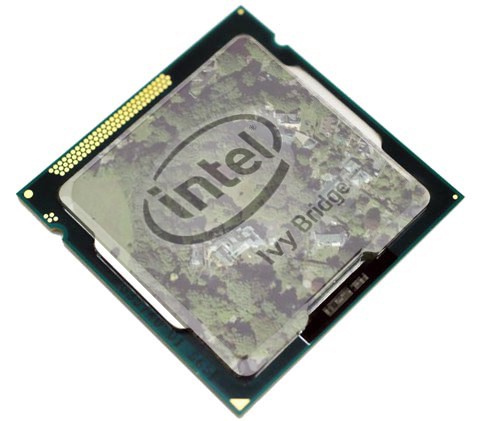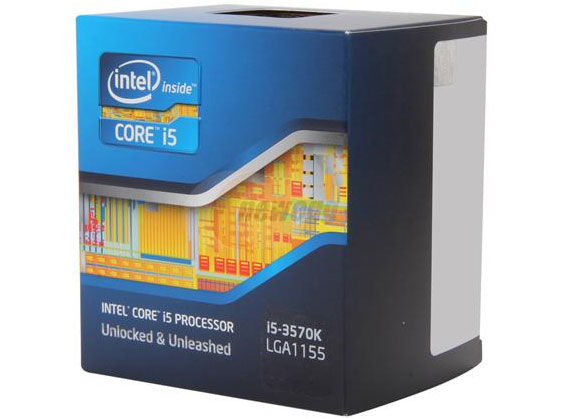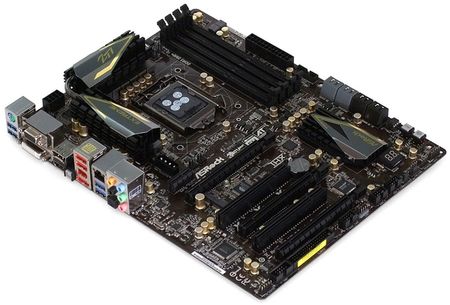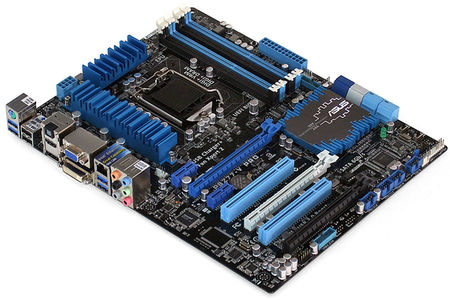So, having decided to build my own computer for the first time in almost a decade, I need to figure out what parts I’m going to buy, and how much I’m going to spend on them. In this first part, I’ll choose the three components that I think about when building any machine: the CPU, the memory, and the motherboard.
CPU
Let’s start at the heart of any computer. There are only two CPUs manufacturers in the PC market, and they’re probably much of a muchness. I’m going with Intel mainly because they’ve recently released a new line of processors (codenamed Ivybridge).
 So far, Intel have only put out a limited range of Ivybridge chips, but I’m sure there will be something that suits my needs.
So far, Intel have only put out a limited range of Ivybridge chips, but I’m sure there will be something that suits my needs.
A nice feature of these Ivybridge chips is that the built-in HD Graphics 4000 module (apparently it’s called “discrete” despite being part of the chip) is quite beefy and supports DirectX 11, which is something my iMac can’t handle. Should I need to stretch my budget, I can take advantage of this by delaying the purchase of the video card.
These days they have three main classes of processor, helpfully arranged in ascending power (and price): i3, i5 and i7. One would be forgiven for going straight to the i7 line, but there’s a $150 price difference between the best i5 and the best i7. So what’s the difference?
Turns out that there are two main differentiators between i5 and i7: number of cores, and hyperthreading. The first will give you a good boost in gaming, the second not so much. So, as a compromise, I’m going with the top-of-the line Core i5, which has the helpfully cryptic name “Intel® Core i5-3570K Processor”. I wrote that one down in the likely event that I might forget that string of numbers.
 As far as CPU cooling goes, I’ll take Intel;’ stock heatsink and fan. They don’t cost extra, and I don’t intend to overclock, so I should be fine.
As far as CPU cooling goes, I’ll take Intel;’ stock heatsink and fan. They don’t cost extra, and I don’t intend to overclock, so I should be fine.
Memory
RAM is one of those components that I was tempted to get a generic brand, pick an affordable size and move on. And then I saw the enthusiast models from companies like g.skill and Corsair. They have heatsinks. With fins. Some even have fans.
Let me repeat that. RAM with fans.
What is this world coming to?
Anyway, now I’m hooked. I’m not going quite so overboard as that video, but I figure that if the price is right, some gaming RAM could be kinda cool, especially if I get a case that lets you see it. This is where I start getting lost. RAM specs were an arcane art when I was building machines 10 years ago, and things have not really improved. Kingston is still a top brand, but my knowledge kinda stops there.
After some flailing around on Google and manufacturer websites, I boil it down to this: I want 16GB, and something that will match my Ivybridge Core i5. Apparently, that means dual channel RAM. I’m probably not going to notice any difference in speed or caching. Depending on the stockist, I’ll probably get Corsair or g.skill kit since they are a ton cheaper than Kingston. Both have ridiculous heatsinks, and deliver 16GB in 2x8GB kits or 4x4GB. Perfect.

Motherboard
Ok, time to stop bumbling along. Although I don’t know much about motherboards, I know enough to narrow things down pretty quickly. First comes the socket type. This is how the CPU connects to the motherboard, and is the largest category you can start with. My Core i5-3570K is a socket-1155 CPU, so I need a socket-1155 mobo. Good start. I should also choose a chipset. The Intel Z77 chipset is designed for performance Ivybridge machines, so let’s go with that.
Next, I look for a decent review. Tom’s Hardware is a reputable site, and they have a good roundup of mid-range Z77 motherboards. Conveniently, they also confirm my choice of the chipset:
… if you’re stuck with a Core 2- or Phenom-based box, Z77 Express and an Ivy Bridge-based processor are the logical path forward.
Now the article’s got a good list of motherboards, and they’re all so pretty that I’m tempted to select on aesthetic criteria alone. But wait, this has to be a functional purchase, so let’s decide what features I need.
The baseline (audio, USB 2.0, HDMI/DVI out, Ethernet, SATA) is all taken care of. So what else? I hear USB 3.0 is making waves, and built-in WiFi would save me an extra purchase later on. Ultimately, I narrow it down to the ASRock Z77 Extreme6 and the ASUS P8Z77-V Pro. The former is cheaper, while the latter’s high price tag includes the WiFi and most of the reviewer’s niggling is aimed at performance revheads. I still like the Extrem6’s styling better, so I’ll keep it as a backup.


So that’s a large portion of the guts of this machine. Depending on vendors and availability, I’ve spent somewhere in the range of $550-$600. While you can actually get a low-end gaming machine for that much, I’m hoping that this lays the groundwork for a rig that will last me a couple years.
In the next part, I’ll finish picking out the guts of the machine and shop around for an exciting case while staying within a modest budget. Have you built a machine recently? Got thoughts on my selection, or suggestions for what I should look at next? Let me know in the comments.